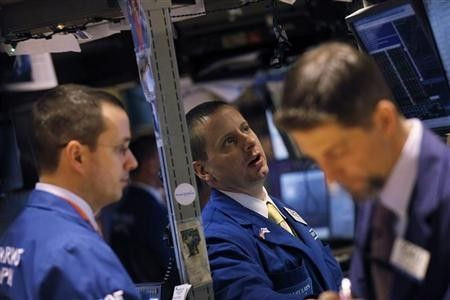US Stock Futures Signal Flat Opening On Thursday Ahead Of Consumer Price Index, Jobless Claims, Housing Starts Data

U.S. stock index futures point to a flat start to the market on Thursday ahead of a wave of economic data including the publication of the Labor Department's weekly jobless claims data and Consumer Price Index (CPI) for the month of April.
Futures on the Dow Jones Industrial Average were down 0.06 percent, futures on the Standard & Poor's 500 Index were down 0.09 percent and those on the Nasdaq 100 Index were down 0.01 percent.
The Department of Labor will report the initial jobless claims data, which measure the number of individuals who filed for unemployment insurance for the first time last week, before the markets open on Thursday. Economists forecast initial jobless claims to be 330,000 for the week ending May 11, up from 323,000 in the previous week.
Investors are also likely to focus on the Department of Labor's CPI for April to be published on Thursday at 8:30 a.m. ET. The CPI, which measures the change in the price of goods and services from the consumers' perspective, is expected to rise 1.3 percent in April on an annual basis compared to 1.5 percent in March, while core inflation probably edged down to 1.8 percent from 1.9 percent reported in the previous month.
Investors will also focus on April housing starts and building permits reports to be published by the U.S. Census Bureau before the opening bell. Housing starts, which measure the change in the annualized number of residential buildings that began construction each month, is expected to decline to 973,000 in April from 1,036,000 in the previous month.
The monthly number of new building permits, which measures the change in the number of new building permits issued by the government each month, is likely to rise to 945,000 in April, up from 907,000 in March.
U.S. stock markets ended with gains on Wednesday despite weaker-than-expected reports on industrial production and New York Empire State Manufacturing Index as hopes for ongoing central bank stimulus buoyed investor sentiment and pushed the Dow and S&P 500 to all-time highs. The Dow Jones Industrial Average gained 0.40 percent or 60.44 points to close at a record high of 15,275.69, the S&P 500 Index climbed 0.51 percent to close at a record high of 1,658.78, and the Nasdaq Composite Index rose 0.26 percent.
“The rally in risk assets continues unabated, with equity markets continuing to post record highs. The fact that this is occurring in spite of weaker data from both the U.S. and in particular Europe, highlights the trust and hope that is being placed on central banks to continue to deliver monetary stimulus in the months ahead,” a note from Credit Agricole said.
The Federal Reserve's Industrial Production and Capacity Utilization report, which was published on Wednesday, showed that the U.S. industrial production declined 0.5 percent in April after a revised 0.3 percent gain in the prior month and also came in worse than a Reuters forecast of a 0.2 percent decline. Meanwhile, manufacturing in the New York region unexpectedly contracted in May as factories received fewer orders.
European stock markets were trading mixed on Thursday with Germany's DAX-30 down 0.05 percent, France's CAC-40 declining 0.44 percent and London's FTSE 100 advancing 0.17 percent.
Asian stock markets mostly ended with gains on Thursday after official data showed that Japan’s economy rose more rapidly than expected in the last quarter. Hong Kong’s Hang Seng gained 0.17 percent, Chinese Shanghai Composite surged 1.21 percent and South Korea’s KOSPI Composite gained 0.79 percent, while Japan's Nikkei pared earlier gains and closed down 0.39 percent at 15,037.24.
According to the data released Thursday by the Cabinet Office, Japan’s Gross Domestic Product (GDP), which measures the annualized change in the inflation-adjusted value of all goods and services produced by the economy, rose 0.9 percent in the January-March period, up from 0.3 percent in the prior quarter and topped Reuters' estimate of a 0.7 percent growth rate.
© Copyright IBTimes 2024. All rights reserved.











